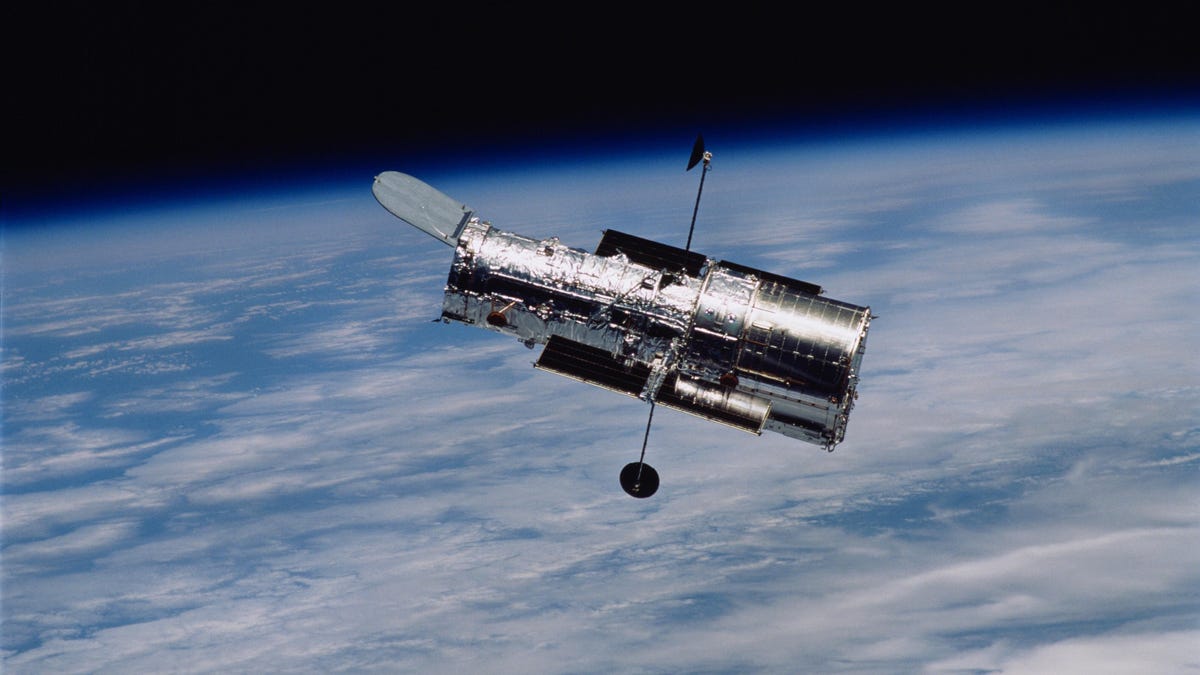A hobbled Hubble Space Telescope back at work after four days in safe mode
The veteran spy of the deep cosmos has awakened from a long nap.

The Hubble Space Telescope just chillin' at altitude.
The Hubble Space Telescope is back at work studying the cosmos, but at a somewhat diminished capacity following more than four days offline this week.
The senior orbiting observatory "went into safe mode due to an onboard software error" at about 1 a.m. PT Sunday and officially returned to science operations at 5 p.m. PT Thursday, according to NASA.
At 8:00 p.m. EST Thursday, the Hubble Space Telescope returned to conducting science operations. https://t.co/T6kAnvUe6A
— Hubble (@NASAHubble) March 12, 2021
Hubble's operations team at NASA's Goddard Space Flight Center in Maryland has determined that a coding error in a recent software update sent to the spacecraft triggered the safe mode. The update has been rolled back until it can be fixed, but the episode also revealed a few more concerning issues with a telescope that may be showing its age.
When Hubble entered safe mode, an aperture door should have automatically closed to shield the telescope and its components from any potential damage from the sun. Much like human eyes, even accidentally pointing Hubble directly at the sun could do serious damage.
Testing revealed a problem with the primary motor that powers the door. The operations team switched to a backup motor that appears to be working.
As the team prepared to return Hubble to normal science operations, an unexpected error with its Wide Field Camera 3 occurred, so the observatory was restarted without it.
In essence, Hubble is now up and running like normal but without its wide-angle lens. NASA said in a statement that it's working to resolve the issue.
Hubble has overcome other issues in the past. In 2018, it entered an extended safe mode following the failure of a gyro, which is a device to measure how quickly the spacecraft is turning. The Hubble team managed to switch to a backup gyro and get Hubble up and running after being down for a few weeks.
Hubble is already well beyond its planned lifetime, which was set at 15 years. It's now been in operation over 30 years. NASA would ideally like to see it last at least a little while longer until the deployment of its successor, the next-generation James Webb Space Telescope.
The James Webb telescope has been delayed several times, but is now set to launch this Halloween.
Get well soon, Hubble!
Follow CNET's 2021 Space Calendar to stay up to date with all the latest space news this year. You can even add it to your own Google Calendar.

